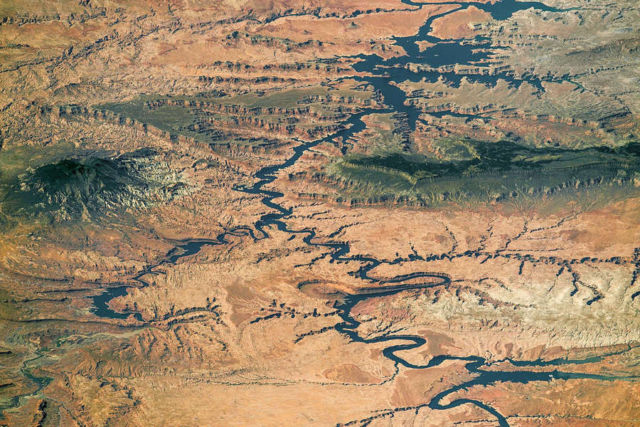Photographed by an astronaut aboard the International Space Station, this unique panorama shows Lake Powell, the reservoir on the Colorado River in southern Utah and northern Arizona.
At full capacity, the reservoir impounds 24,322,000 acre-feet of water, a vast amount that is used to generate and supply water to several western United States, while also aiding in flood control for the region. It is the second largest reservoir by maximum water capacity in the United States (behind Lake Mead).
Landscape elevation changes are hard to see from space, but astronauts learn to interpret high and low places by their color. Green forests indicate two high places in the image that are cooler and receive more rain than the dry, low country surrounding the lake. The isolated Navajo Mountain is a sacred mountain of the Native American Navajo tribe and rises to 3,154 meters (10,348 feet). The long, narrow Kaiparowits Plateau rises nearly 1200 meters (4,000 feet) from Lake Powell to an elevation of more than 2300 meters (7,550 feet). More than 80 kilometers (50 miles) long, the plateau gives a sense of horizontal scale.
Note that the ISS was north of the lake at the time, so in this view south is at the top left of the image.
Image Credit: NASA
Caption: M. Justin Wilkinson, Texas State University, and Andi Hollier, Hx5, Jacobs Contract at NASA-JSC
source NASA






Leave A Comment